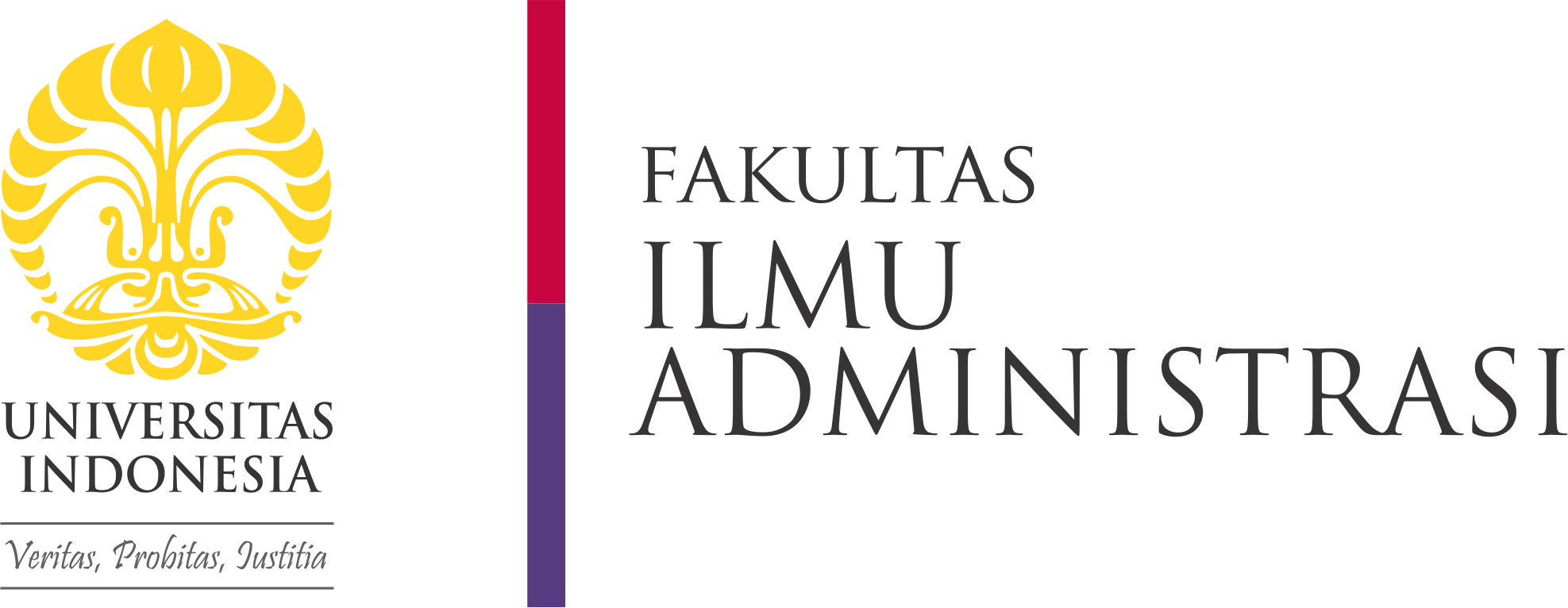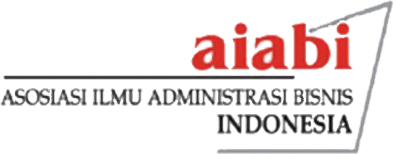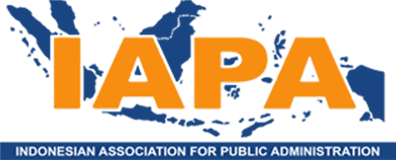Creative Commons License

This work is licensed under a Creative Commons Attribution-Share Alike 4.0 International License.
Abstract
The studies of Flexible Working Arrangement (FWA) have increased significantly in 2020. However, most studies are focused on the benefits and risks of FWA in general or particular jobs. The model of FWA implementation in different characteristics of jobs to improve performances are still insufficiently researched. Using a case study with qualitative and quasi-statistic data, this study investigates the Indonesian public sector in implementing FWA policy. Investigating Indonesia allows the researchers to describe how FWA in a mandated leading training institute promotes performances in different types of jobs. This study finds that each department endured unique circumstances. The Research Department could apply for full FWA due to employees’ high work autonomy, sufficient work equipment, adequate individual competency, compatibility for virtual communication, and high satisfaction while working at home. The Training Department had a similar level of readiness even though many of its staff preferred work at the office. Meanwhile, the Competency Assessment Department was bound to categorize tasks based on their possibility to be accomplished at home or office before applying FWA, due to its transition toward the e-assessment system. Finally, the Administration Department needed extra effort before applying FWA, which included out-of-office work-objects accessibility for its employees, paid special attention to competency gap among employees particularly IT skills, and overcame limited work equipment at home. Above all, organizations are required to focus on performance management notably in tasks distribution, work supervision, feedback, and maintenance of trust between employees and the management team.
Bahasa Abstract
Studi tentang Flexible Working Arrangement (FWA) meningkat secara signifikan pada tahun 2020. Namun, sebagian besar studi difokuskan pada manfaat dan risiko FWA secara umum atau pekerjaan tertentu. Model implementasi FWA dalam karakteristik pekerjaan yang berbeda untuk meningkatkan kinerja masih belum banyak diteliti. Dengan menggunakan studi kasus dengan data kualitatif dan statistik kuasi, penelitian ini bertujuan untuk menginvestigasi bagaimana penerapan kebijakan FWA pada sektor publik Indonesia. Harapannya hasil penelitian ini dapat memberikan gambaran mengenai bagaimana penerapan FWA di sebuah organisasi sektor publik dapat mendorong peningkatan kinerja pada berbagai jenis pekerjaan. Studi ini menemukan bahwa karakteristik pekerjaan setiap bidang itu unik. Bidang Kajian paling siap melakukan FWA karena memiliki kemandirian dalam bekerja, sarana prasarana kerja di rumah yang memadai, SDM berkompetensi tinggi, tidak adanya hambatan koordinasi kerja secara virtual, dan kepuasan pegawai saat bekerja dari rumah. Bidang Pelatihan memiliki kesiapan serupa, tetapi sebagian pegawainya memiliki preferensi bekerja di kantor. Sementara itu, Bidang Pemetaan Kompetensi karena masih belum sepenuhnya fokus pada penyelenggaraan pemetaan kompetensi berbasis daring, maka untuk dapat menerapkan kebijakan FWA perlu mengkategorikan antara pekerjaan yang dapat diselesaikan di rumah dan kantor. Sementara itu, kecenderungan pegawainya untuk bekerja di kantor perlu mendapat perhatian. Terakhir, Bagian Administrasi memerlukan lebih banyak penyesuaian untuk bisa melakukan FWA mencakup pengelolaan bahan kerja yang bisa diakses dari manapun, peningkatan kompetensi SDM khususnya penguasaan TI, dan penyediaan sarana prasarana kerja di rumah yang memadai. Di atas itu semua, manajemen kinerja perlu diperhatikan dalam kaitannya dengan pendistribusian kerja, pengawasan dan pemberian umpan balik, serta pembangunan hubungan kepercayaan antara atasan dan bawahan.
References
ADB. 2021. A Diagnostic Study of The Civil Service in Indonesia. ADB: Manilla. DOI: http://dx.doi.org/10.22617/TCS210016-2
Ayhan, M. B., Oztemel, E., Aydin, M. E., and Yue, Y. 2013. A Quantitative Approach for Measuring Process Innovation: A Case Study in A Manufacturing Company. International Journal of Production Research,Vol. 51 No. 11.
Baker, E., Avery, G. C. and Crawford, J. 2007. Satisfaction and Perceived Productivity when Professionals Work From Home. Research and Practice in Human Resource Management, Vol. 15 No. 1.
Bloom, N. 2014. To Raise Productivity, Let More Employees Work From Home. Harvard Business Review, Vol. 92 No. 1-2 (January).
Broadbridge, A. 1999. Retail Managers: Stress and The Work‐Family Relationship. International Journal of Retail & Distribution Management, Vol. 27 No. 9 (November).
Chung, H. 2018. Gender, Flexibility Stigma and The Perceived Negative Consequences of Flexible Working In The UK. Social Indicators Research, Vol. 151 No. 2 (September).
Creswell, J. W. 2009. Research design: Qualitative and Mixed Methods Approaches. London and Thousand Oaks: Sage Publications.
Creswell. 2014. Research design: Qualitative, Quantitative, and Mixed Methods Approaches. London and Thousand Oaks: Sage Publications.
Conradie, W. J., & De Klerk, J. J. (2019). To flex or not to flex? Flexible work arrangements amongst software developers in an emerging economy. SA Journal of Human Resource Management, 17(1), 1-12.
De Menezes, L. M., & Kelliher, C. (2017). Flexible working, individual performance, and employee sttitudes: Comparing formal and informal arrangement. Human Resource Management, 56(6), 1051-1070
Elbing, A. O., Gadon, H., & Gordon, J. R. 1974. Flexible Working Hours: It's About Time. Harvard Business Review, Vol. 52 No. 1.
Felstead, A., Jewson, N., Phizacklea, A., & Walters, S. 2002. The Option to Work at Home: Another Privilege for The Favoured Few? New Technology, Work and Employment, Vol. 17 No. 3 (November).
____________________________________________. 2002. Opportunities to Work at Home In The Context of Work‐Life Balance. Human Resource Management Journal, Vol. 12 No. 1 (August).
Giannikis, S., and Dimitrios, M. 2011. Flexible Work Arrangements in Greece: A Study of Employee Perceptions. The International Journal of Human Resource Management, Vol. 22 No. No. 2 (January).
Golden, L. 2011 The Effects of Working Time on Productivity and Firm Performance: A Research Synthesis Paper. Conditions of Work and Employment Series No. 33, International Labour Office-Geneva
Govender, L., Migiro, S. O., & Kyule, A. K. 2018. Flexible Work Arrangements, Job Satisfaction and Performance. Journal of Economics and Behavioral Studies, Vol. 10 No. 3.
Hazak, A., Sõõru, E., Hein, H., & Männasoo, K. (2020). Effects of Work Arrangements on The Sleep Regimen of Creative Research and Development Employees. International Journal of Occupational Safety and Ergonomics, Vol. 26 No. 4 (July).
Hegewisch, A., & Gornick, J. C. 2011. The Impact of Work-Family Policies on Women's Employment: A Review of Research from OECD Countries. Community, Work & Family, Vol. 14 No. 2 (May)
Hill, J. E., Grzywacz, J. G., Allen, S., Blanchard, V. L., Matz-Costa, C., Shulkin, S., dan Pitt Catsouphes, M. 2008. Defining and Conceptualizing Workplace Flexibility. Community, Work & Family, Vol. 11 No. 2.
Hopkins, L., & Pedwell, G. (2021). The COVID PIVOT-Re-orienting Child and Youth Mental Health Care in the Light of Pandemic Restrictions. Psychiatric Quarterly, 1-12.
Irawati, E. 2019. Menyongsong Flexible Working Arrangement bagi ASN. Jurnal Analis Kebijakan, Vol. 3 No. 1.
Kalleberg, A. L. 2003. Flexible Firms and Labor Market Segmentation: Effects of Workplace Restructuring on Jobs and Workers. Work and Occupations, Vol. 30 No. 2 (May).
Kattenbach, R., Demerouti, E., &Nachreiner, F. 2010. Flexible Working Times: Effects on Employees' Exhaustion, Work-Non-Work Conflict and Job Performance. Career Development International, Vol. 15 No. 3.
Kotey, B. A., & Sharma, B. (2019). Pathways from flexible work arrangements to financial performance. Personnel Review.
Lazauskaite-Zabielske, J., Ziedelis, A., & Urbanaviciute, I. 2020. Who Benefits From Time-Spatial Job Crafting? The Role Of Boundary Characteristics In The Relationship Between Time-Spatial Job Crafting, Engagement And Performance. Baltic Journal of Management, Vol. 26 No. 1 (November).
Lewis, J. M., Ricard, L. M., and Klijn, E. H. 2018. How Innovation Drivers, Networking and Leadership Shape Public Sector Innovation Capacity. International Review of Administrative Sciences, Vol. 84 No. 2.
López-Igual, P., & Rodríguez-Modroño, P. 2020. Who is Teleworking and Where From? Exploring The Main Determinants of Telework in Europe. Sustainability, Vol. 12 No. 21 (October).
Lott, Y. 2018. Does Flexibility Help Employees Switch Off from Work? Flexible Working-Time Arrangements and Cognitive Work-to-Home Spillover for Women and Men in Germany. Social Indicators Research, Vol. 151 No. 1 (September).
Mas, A., & Pallais, A. 2020. Alternative Work Arrangements. Annual Review of Economics, Vol. 12 (August).
McKee, L. F. 1988. Setting up Work at Home. Personnel Administrator, Vol. 33 No. 12.
Mungania, A. K., Waiganjo, E. W., & Kihoro, J. M. 2016. Influence of Flexible Work Arrangement on Organizational Performance in the Banking Industry in Kenya. International Journal of Academic Research in Business and Social Sciences, Vol. 6 No. 7 (July).
Newman, S. 1989. Telecommuters Bring The Office Home. Management Review, Vol. 78 No. 12 (December).
OECD/ADB. 2019. Government at a Glance Southeast Asia 2019. Paris: OECD Publishing. https://doi.org/10.1787/9789264305915-en
Olson, M. H., and Primps, S. B. 1984. Working at Home with Computers: Work and Nonwork Issues. Journal of Social Issues, Vol. 40 No. 3.
Pramusinto, A. 2011. Family Friendly Policy dan Produktivitas Pegawai Negeri Sipil. Jurnal Civil Service, Jurnal Kebijakan dan Manajemen PNS. Vol. 5 No. 2 (November).
Rahman, M. F. W., Kistyanto, A., & Surjanti, J. 2020. Flexible Work Arrangements In Covid-19 Pandemic Era, Influence Employee Performance: The Mediating Role of Innovative Work Behavior. International Journal of Management Innovation & Entrepreneurial Research, Vol. 6 No. 2 (July).
Sari, A. 2019. Pengaruh Penerapan Jam Kerja Fleksibel Pada Dosen Di Lingkungan PTKIN (Studi pada Dosen IAIN Surakarta). IAIN Surakarta.
Shamir, B., and Salomon, I. 1985. Work-at-Home and The Quality of Working Life. The Academy of Management Review, Vol. 10 No. 3 (July).
Sirait, E. R. E., & Zellatifanny, C. M. 2020. An Empirical Study: Computer-Mediated Communication and Collaboration among Government Employees during Flexible Working Arrangements. In 2020 International Conference on Information Technology Systems and Innovation (ICITSI) (October). IEEE.
Steidelmüller, C., Meyer, S. C., & Müller, G. 2020. Home-Based Telework and Presenteeism Across Europe. Journal of Occupational And Environmental Medicine, Vol. 62 No. 12 (August)
Tan, K. G., & Amri, M. 2013. Subnational Competitiveness and National Performance: Analysis and Simulation for Indonesia. Journal of CENTRUM Cathedra: The Business and Economics Research Journal, Vol. 6 No. 2.
Venkatesh, A., and Vitalari, N. P. 1992. An Emerging Distributed Work Arrangement: An Investigation of Computer-Based Supplemental Work at Home. Management Science, Vol. 38 No. 12 (December).
Xiang, N., Whitehouse, G., Tomaszewski, W., & Martin, B. (2021). The benefits and penalties of formal and informal flexible working-time arrangements: evidence from a cohort study of Australian mothers. The International Journal of Human Resource Management, 1-22.
Zedeck, S., and Mosier, L., 1990. Work in The Family and Employing Organization. American Psychologist, Vol. 45 No. 2.
Recommended Citation
Tasrin, krismiyati; Wahyuadianto, Agus; Pratiwi, Pratiwi; and Masrully, Masrully
(2021)
"Evaluation Study of the Implementation of Flexible Working Arrangement in Public Sector Organization during Covid-19 Pandemic,"
BISNIS & BIROKRASI: Jurnal Ilmu Administrasi dan Organisasi: Vol. 28:
No.
3, Article 3.
DOI: 10.20476/jbb.v28i3.1274
Available at:
https://scholarhub.ui.ac.id/jbb/vol28/iss3/3
Included in
E-Commerce Commons, Entrepreneurial and Small Business Operations Commons, Human Resources Management Commons, Operations and Supply Chain Management Commons, Public Affairs, Public Policy and Public Administration Commons, Taxation Commons






